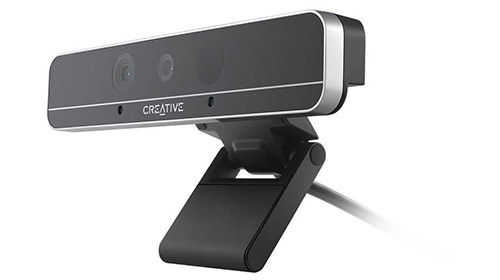Personal 3D cameras may be closer than you think

ntel’s RealSense technology, present in many of its cameras, like the one above, may soon be coming to a smart-phone. The company revealed a prototype for a phone with RealSense at a conference earlier this year.
May 18, 2015
Phone companies claim that they have the best camera out there, but Intel is countering that with a new way to take pictures.
Intel has revealed a prototype of a new version of a 3D depth camera that’s thin enough to fit a smartphone.The phone was revealed by chief executive Brian Krzanich during an event in Shenzhen, China.
Krzanich was showing off an example of a RealSense-enabled phone which will make pictures taken by the camera three-dimensional. He didn’t demon- strate the camera working, which indicates that the phone is in its early stages of development.
“It was weird because Brian Krzanich (is) known for taking risks with per- forming live demos at tech events, and yet this was pretty much the only device he did not turn on to show what it did on stage, which might say something about the early stage it is at,” Richard Lai, editor-in-chief of Engadget Chinese, told the BBC.
A RealSense camera can be used to change the focus of a phone after it has been taken. This focus change is what allows the pictures to become three dimensional.
The prototype of the Intel 3D cam- era phone was very large, larger than typical cell phones today. The prototype looked more like a small tablet.
The same technology is found in the Microsoft’s Kinect motion-and-image sensor but the phone will be in a smaller package.
“We’ve got to the stage where put- ting even higher-resolution cameras in phones is no longer as much of a selling point as it used to be,” said Chris Green, of the Davies Murphy Group consultancy.
The first time Intel showed the Real- Sense components was last year on lap- tops. The technology been used will pro- vide gesture recognition, allowing users to control the devices without having to touch them.
This technology has been used on laptops and on tablets, making Intel the first manufacturer to incorporate this technology into different devices.
Intel isn’t the only on the path tho this technology though. Google created the Tango Project, which is a 3D im- age sensor made by a German company PMDT Technologies. This is the most advanced image sensor that we have to- day for devices.
The US-based Pelican Imaging is creating a plan of having users take 3D selfies. Looks like Apple is also working on 3D technology because they bought PrimeSense,a 3D sensor, in November 2013.
“The device (RealSense) is meant to show the different types of apps, usage models and form factors that RealSense tech can be integrated into and to en- courage innovation,” an Intel spokes- woman said in the article for the BBC.
















